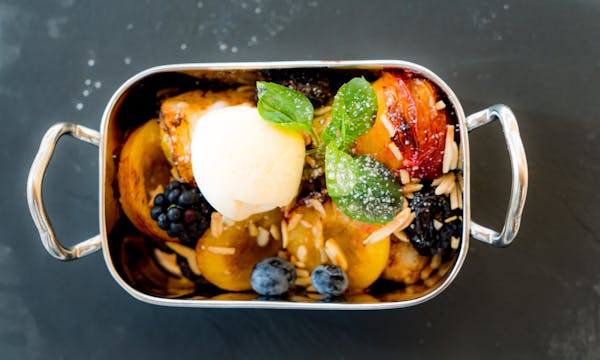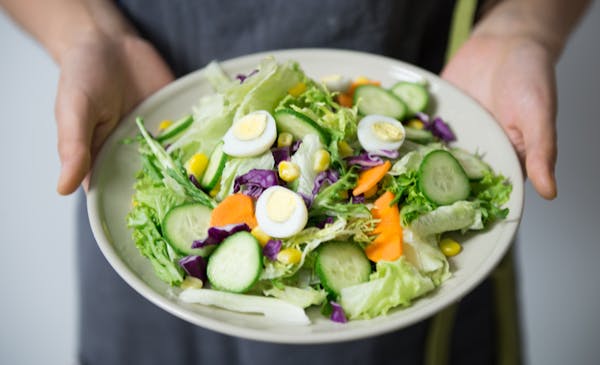If you are looking for a new and healthy cuisine, Chinese food can be an excellent choice. It is low in fat and cholesterol and can be a good source of many nutrients.
The dishes typically consist of a combination of meat, vegetables, and rice or noodles. This helps balance the meal and make it more filling.
1. Rich in Nutrients
Chinese dishes are rich in nutrients and provide many health benefits. They are also high in fiber, which helps to normalize bowel movements and balance blood sugar levels.
Moreover, they are low in calories and fat, making them an ideal choice for weight loss or maintaining a healthy weight. They are also a good source of vitamins and minerals.
In addition, Chinese cuisines are high in flavor. They use a wide variety of ingredients and spices to create unique dishes that are sure to satisfy your taste buds.
2. High in Fiber
In addition to fiber, most Chinese dishes also contain vegetables which can be high in vitamins, minerals, and antioxidants. These vitamins and minerals can help your body fight off free radicals and prevent disease.
If you are trying to eat more healthily, you can make the best of your Chinese meal by choosing vegetables and lean proteins over the less healthy options like white rice and fried chicken. You can also use sauces and oils sparingly to keep the sodium, fat, and calories down.
3. Low in Calories
Chinese dishes typically offer a balance of carbs, proteins, and vegetables. They also use a variety of spices and seasonings that help provide a wide range of tastes and textures.
Many of these foods can be high in calories, however, especially if you add noodles or rice to your meal. So be careful when choosing Chinese takeout dishes, and choose dishes with fewer calories and more fruits, vegetables, and other healthy ingredients.
For example, a stir-fried chicken dish with snow peas and mushrooms as in moo goo gai pan typically contains about 250 to 600 calories. This is much less than a similar dish with beef in black bean sauce or chicken with broccoli, both of which have about 800 calories per serving, according to the Nutrition Twins.
4. High in Protein
Chinese meals are often high in protein, particularly meat, and poultry. This type of diet helps build muscle and prevent weight gain.
Similarly, Chinese dishes are also high in fiber. This nutrient promotes a healthy digestive system and helps maintain good blood sugar levels.
Tofu is another popular choice for a protein-rich meal. Made from soybean curd, tofu is a great source of calcium, iron and other essential amino acids.
However, it is important to watch out for hidden sources of sodium and unhealthy fats like lard or palm oil that may increase your risk of heart disease and stroke. Therefore, it is best to choose low-sodium soy sauce or other ingredients that are low in salt and fat when eating out.
5. Low in Fat
Chinese dishes are often accompanied by large amounts of vegetables, which make them healthy for people on a low-calorie diet. They also contain a good amount of protein and fiber, which provide essential nutrients for the body.
The fats in Chinese cuisine are not saturated, which is good for the heart. They are instead unsaturated, which can help lower cholesterol levels.
Nevertheless, the calorie content of some dishes can double the number of calories that some diners need in a day to maintain their weight, says Bonnie Liebman, director of nutrition for the Center for Science in the Public Interest. She recommends ordering foods steamed instead of fried, asking for sauces on the side, and choosing low-calorie vegetables.
6. Rich in Vitamins and Minerals
Aside from the usual suspects, such as fish and rice, Chinese cuisine also features a number of fruits, vegetables and spices, as well as a few unusual ingredients like dried sea cucumber.
While the best thing about eating Chinese is that you can taste it all, avoiding mercury-rich seafood and choosing the right ones to pair with your noodles or steamed buns is a smart move for your health and well-being. To keep the calories in check, try to limit your servings of fried foods or those that are laden with fat. The healthiest dishes are those that are balanced with a variety of vegetables, proteins, and healthy fats.
7. Low in Cholesterol
Eating Chinese food can be good for you if you follow certain health tips. It’s best to choose dishes that are low in fat, cholesterol, and sodium.
Most Chinese meals include a balanced mix of carbs and protein, providing your body with all the nutrients it needs to stay healthy. Vegetables are also a great source of fiber, which can help reduce inflammation and improve heart health.
In addition, Chinese foods are low in saturated fat and cholesterol. This is important if you are trying to lower your lipid levels and reduce the risk of developing gallstones.
8. Low in Sodium
Sodium is a crucial nutrient that is essential for the body to function properly, but too much can lead to high blood pressure and other health problems.
Chinese food is high in salt, and that’s not good news for anyone trying to lower their sodium intake. A UK advocacy group, Action on Salt, found that some takeout meals had a similar amount of sodium to five Big Macs or 70 Ritz crackers.
A safe amount of sodium is about 2.3 grams per day, and consuming too much can increase the risk of heart disease, stroke and high blood pressure. The best way to reduce your daily sodium intake is to choose healthier options like steamed dumplings and veggies-filled appetizers instead of deep fried ones.
9. High in Antioxidants
They also help to normalize blood sugar levels and prevent weight gain. Moreover, they contain high fiber, which keeps the digestive system healthy and regular.
Besides, they are a good source of protein and calcium. They are also rich in isoflavones, which can reduce inflammation, aid in the prevention of cancer, and slow down the aging process.
Antioxidants are compounds found in many foods, such as fruits, vegetables, and whole grains, that protect the body from oxidative damage. The Australian Dietary Guidelines encourage you to eat a wide variety of foods that contain antioxidants and phytonutrients to obtain the maximum benefits from them.
10 Tips For Making the Perfect Chinese Food
10. Low in Sugar
The modern-day Chinese meal is typically a combination of meat, seafood, and vegetables in a variety of forms. The best part is that many of these dietary concoctions are actually good for you. For example, the right combination of ingredients is known to reduce your risk for heart disease and diabetes. If you’re looking for a light yet nutritious meal that won’t break the bank, consider a visit to your local Chinese restaurant or takeout joint. Besides being delicious, these restaurants are often a lot less expensive than your typical diner. Moreover, they are often open late or even 24 hours, so you won’t have to go to bed hungry.




